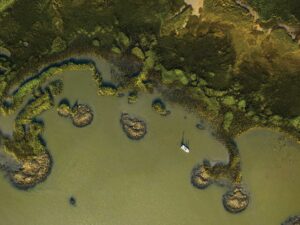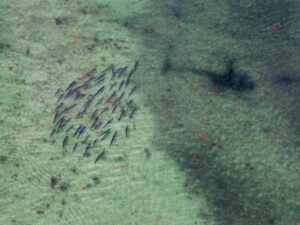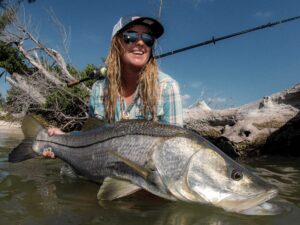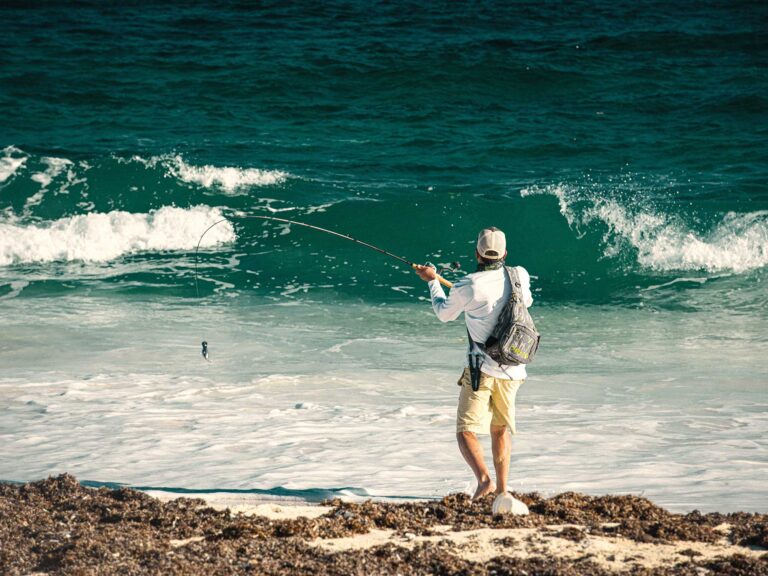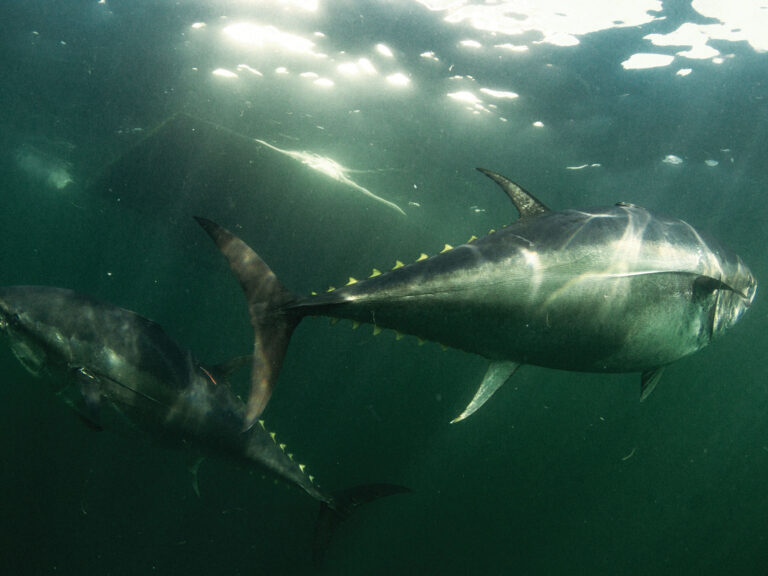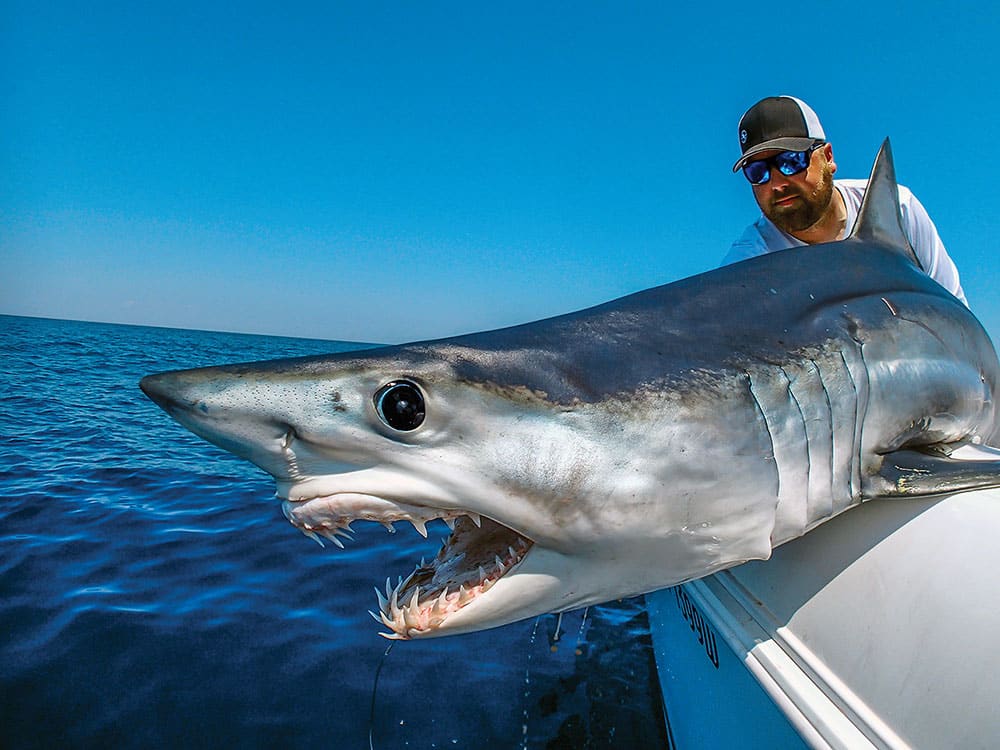
Mako fishing has changed since the days of meat hooks and Capt. Quinn. Modern aficionados know that the fastest shark in the sea is a sucker for high-speed baits.
Out of Hatteras Inlet, North Carolina, Capt. Kenny Koci trolls for makos in late winter and early spring. “When the big bluefish show up, big mako follow,” he says. On an overcast day, the sharks hunt on the surface. “I’ll see them swimming down-sea,” Koci adds, “and they often hang with hammerheads.”
As winter turns to spring, northern water pushes against the warmer Gulf Stream. Koci looks for makos along the edge on the offshore sides. The fish favor cooler temperatures in the mid-60s to low 70s. In the absence of a significant temperature change, he turns to ledges and drops in 30 to 100 fathoms.
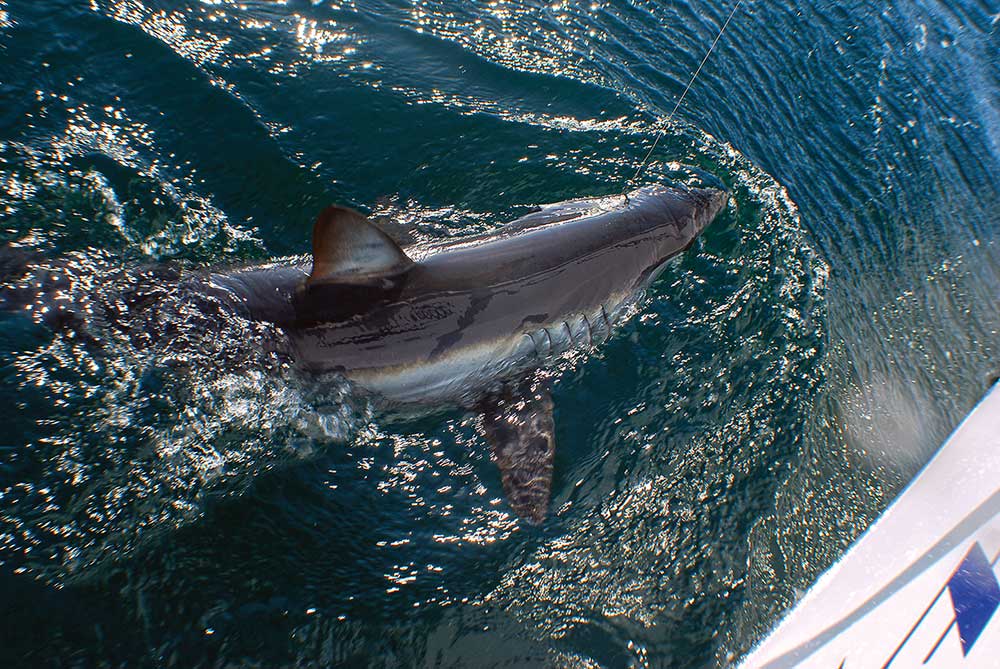
Koci likes to troll Ilanders and large swimming lures. “Dark colors are the best — blues, blacks and purples,” he says. He rigs the Ilander skirt on an 18-inch section of No. 15 single-strand wire attached to a 25-foot leader of 200-pound-test that runs to a wind-on swivel and 80-pound mono on a 50-pound-class rod.
“I keep the boat in gear to keep the line tight,” he says. “Hopefully, that will keep the fish from jumping and landing on the line.” He also runs a big swimming lure from the flat line. “I like a smaller Marauder on a 6-foot length of Sevenstrand cable,” he says.
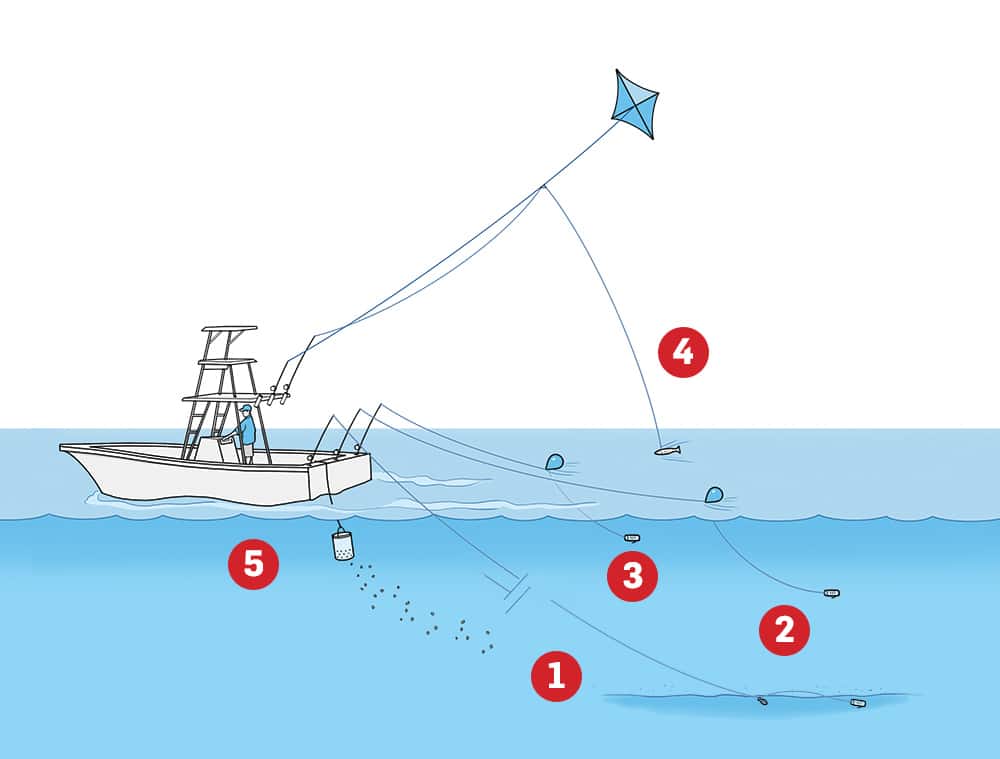
Mako Spread
Capt. Mark Sampson runs three lines off the transom when drifting for makos. The deepest bait (1) sits a few feet off the bottom, from 60 to 120 feet back. The second (2) rides 20 feet deep, under a ballon. The third bait (3) trails off the stern. Sampson also uses a kite to put a live bait (4) on the surface. And he hangs a chum bucket with a gallon of chum (5) off the transom to draw makos.
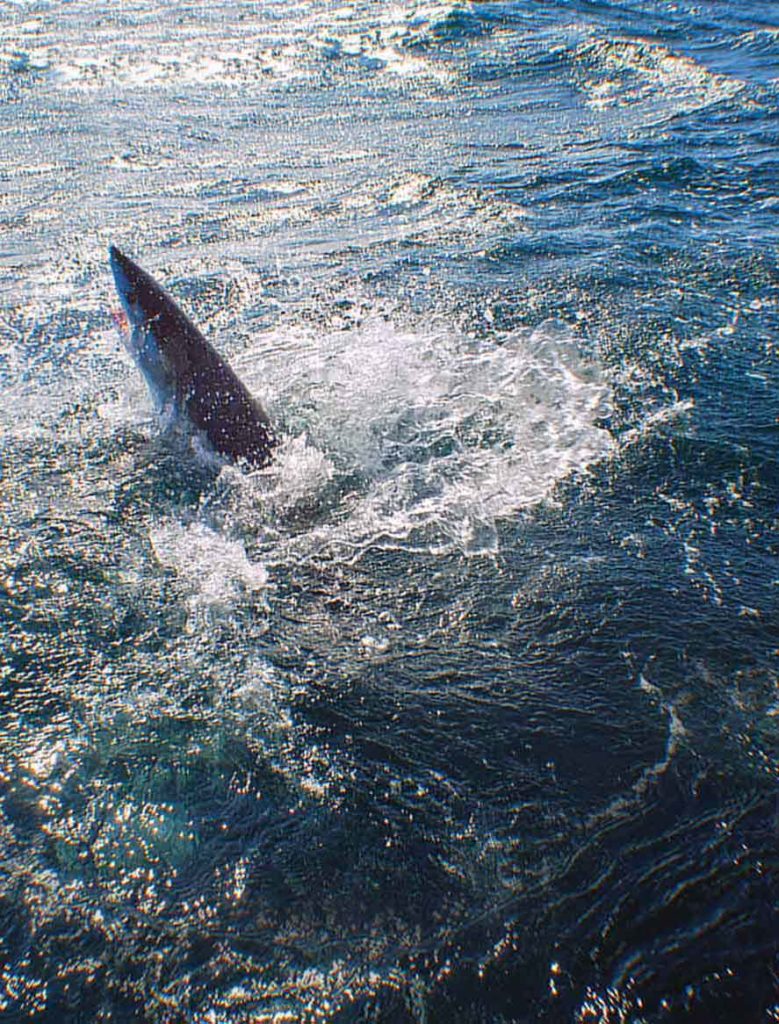
Bait Bites
Even time-tested bait-fishing tactics have taken a modern turn. Capt. Mark Sampson, who targets sharks out of Ocean City, Maryland, relies on chumming and soaking baits to attract makos to his hook.
His shark season runs from late May to early October, with the best shots early and late. “As soon as the water hits 56 degrees, I expect makos to show up,” he says. He focuses on the hills and valleys in 20 to 30 fathoms. Finding bait is most important,” he says.
“You can go north, south or due east and find the fish. Just get out there and start chumming,” he suggests. “The fish will find you.”
“I’ll even use a strip bait on the kite. The kite drives sharks crazy.”
He favors tuna and albacore that offshore sharks are accustomed to eating. “Fish oil may make a slick,” he explains, “but that’s on the surface.” Instead he likes to see little pieces of groundfish drifting away from the boat.
He freezes 1-gallon zip-lock bags with his own mix of albacore and tuna, ground to the consistency of hamburger. He puts a bag of chum in a 5-gallon bucket with a dime-size hole drilled in the lid. The bucket floats upside down, allowing small pieces of chum to slowly escape. For bait, he cuts an 8-inch-by-3-inch wedge of bluefish or tuna and fishes them off a blocker rig. “Stick the hook through the strip one time and you’re ready,” he says.
On a nice day, he’ll fish four baits. The bait farthest out floats on the surface. The next one is 20 feet down, and the bait closest to the boat sits just off the bottom with an 8-ounce sinker rubber-banded to the line. He leaves one bait dangling near the chum bucket. Most mako bites come on the surface baits, he says.
Sampson’s most enticing bait hangs from a kite, with a live bluefish or mackerel on the surface. “I’ll even use a strip bait on the kite,” he says. “The kite drives sharks crazy.”
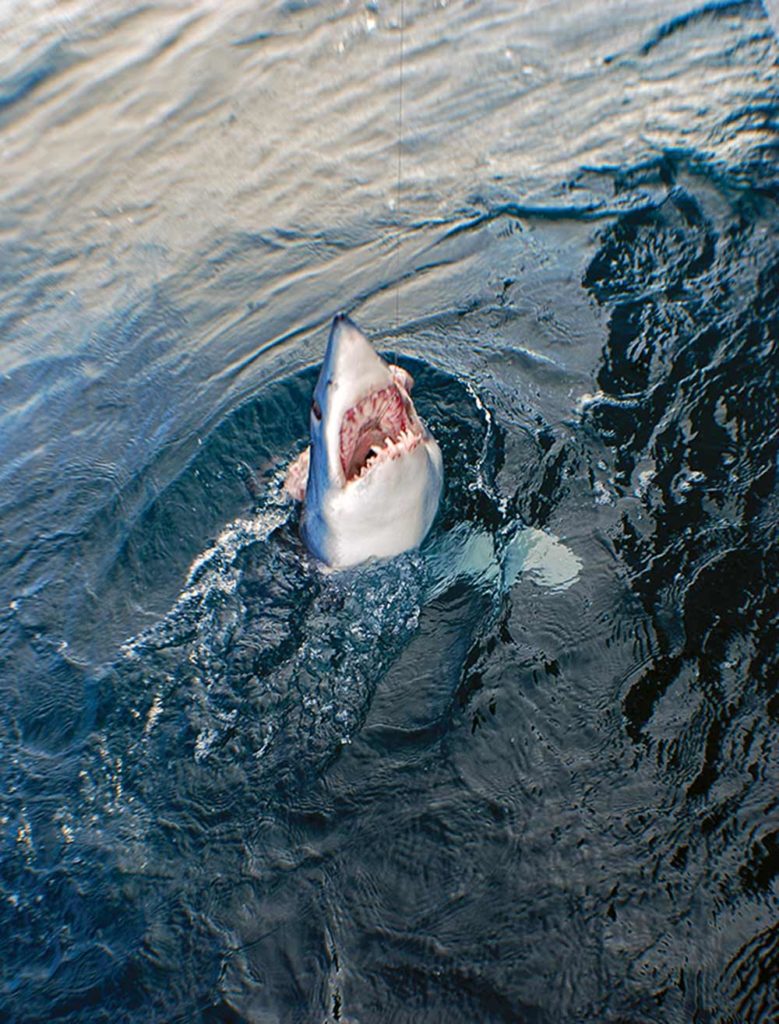
Blocker Rig
“With the circle hooks, we were still deep-hooking fish,” Samson says. So he cooked up the blocker rig: About a foot above the hook, he adds a 12-inch section of Sharkbite flexible conduit (from the hardware store) perpendicular to the leader to prevent the shark from swallowing the hook. “The fish aren’t scared off by the PVC,” he says. Start with a hook haywired to 7 inches of No. 12 single-strand wire with a plastic stopper bead on the loop of the twist at the other end.
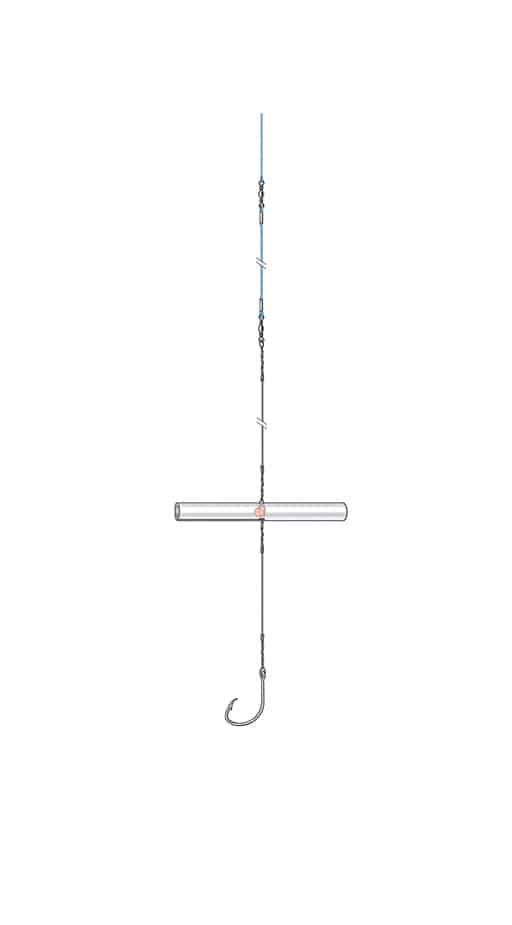
2.) 10 feet of 400-pound mono crimped to swivels
3.) Wire hay-twisted to barrel swivel
4.) Stopper bead on interlocking haywire twists
5.) 12-inch section of sharkbite conduit, drilled and slotted
6.) Hook twisted to No. 12 wire Illustration by Steve Sanford
Interlock another haywire twist with that one to add another section of wire, for a total length of 3 feet. Thread the end of the wire through a hole drilled in the stopper. A slot cut to the end of the conduit allows seating the bead inside the stopper. Then finish the leader as indicated.
Safety Check
Both captains stress safety when dealing with sharks.
When he has a shark alongside, Sampson first grabs a flying gaff. “I stick the fish in the tail,” he says. He keeps the boat moving ahead slowly and slips a rope over the fish’s tail. “We tie the tail to the spring cleat and drag the fish until we’re ready to bring it in the boat,” he says. Before landing the shark, they slip another rope over its head. Once the fish is in the boat, he ties the ropes around the tail and head to opposite cleats to secure the fish.
Koci uses a similar approach. “First, we hit the shark with the dart,” he says, “which allows the fish to spin and twist.” Then he slips a loop over the tail and drags the fish beside the boat until it’s dead. After an hour or more, he brings the shark on board. “We tie the head and tail to cleats and cut a wedge in the base of the skull to kill the fish.” Then he guts the shark and packs it with ice to preserve the meat. “Mako steak tastes like pork chops,” he says. “I can eat it every day of the week.”
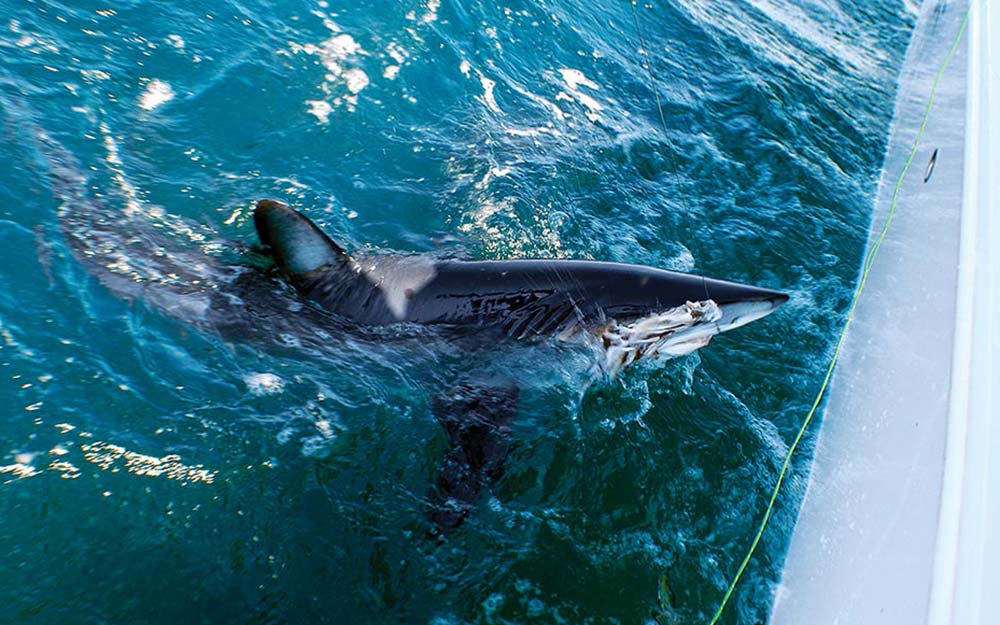
Fast Facts for Success
Weather: Overcast days are best.
Temperature: 56 degrees starts the bite.
Depth: From 30 to 100 fathoms.
SWS Planner
What: Mid-Atlantic mako sharks
Where: New Jersey to Hatteras, North Carolina
When: May to October, best early and late
Who: These top guides can hook you up with high-flying mako sharks:
Hatteras
Capt. Kenny Koci
252-293-6799
Virginia Beach
Capt. Jake Hiles
757-749-6008
Ocean City, Maryland
Capt. Mark Sampson
410-726-7946
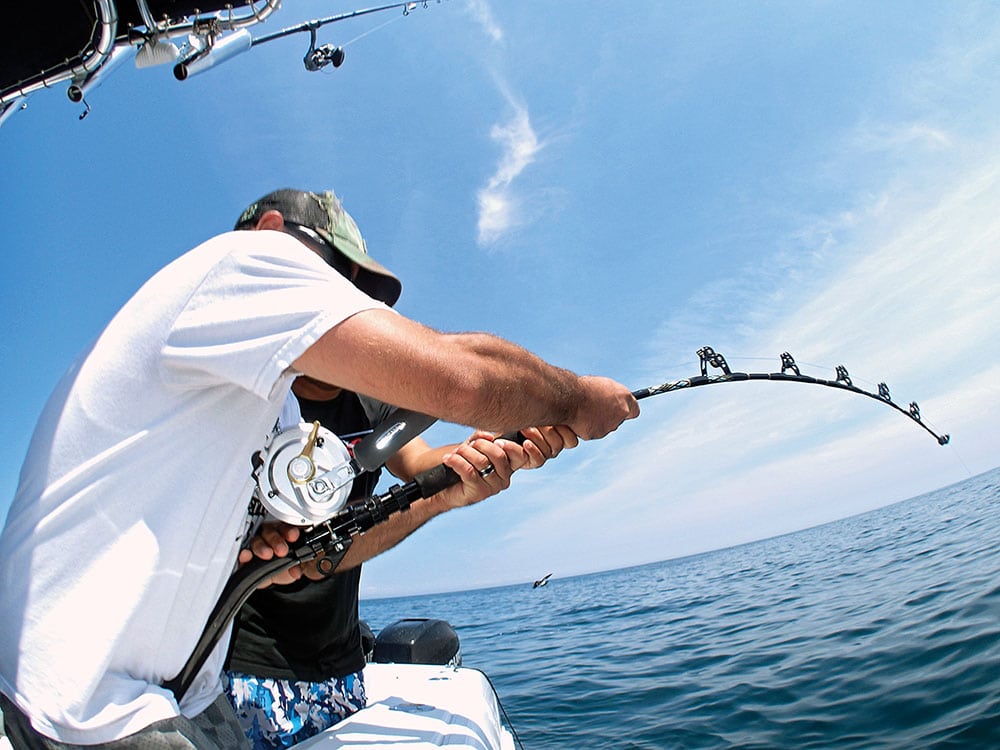
SWS Tackle Box
Rods: Heavy-action, 6-foot conventional, stand-up
Reels: Matching 50- to 80-pound-class
Line: 50- to 80-pound main line, 200-pound top shot, No. 12 single-strand wire leader
Lures: Ilander lures, 11/0 J-hooks, 12/0 circle hooks


